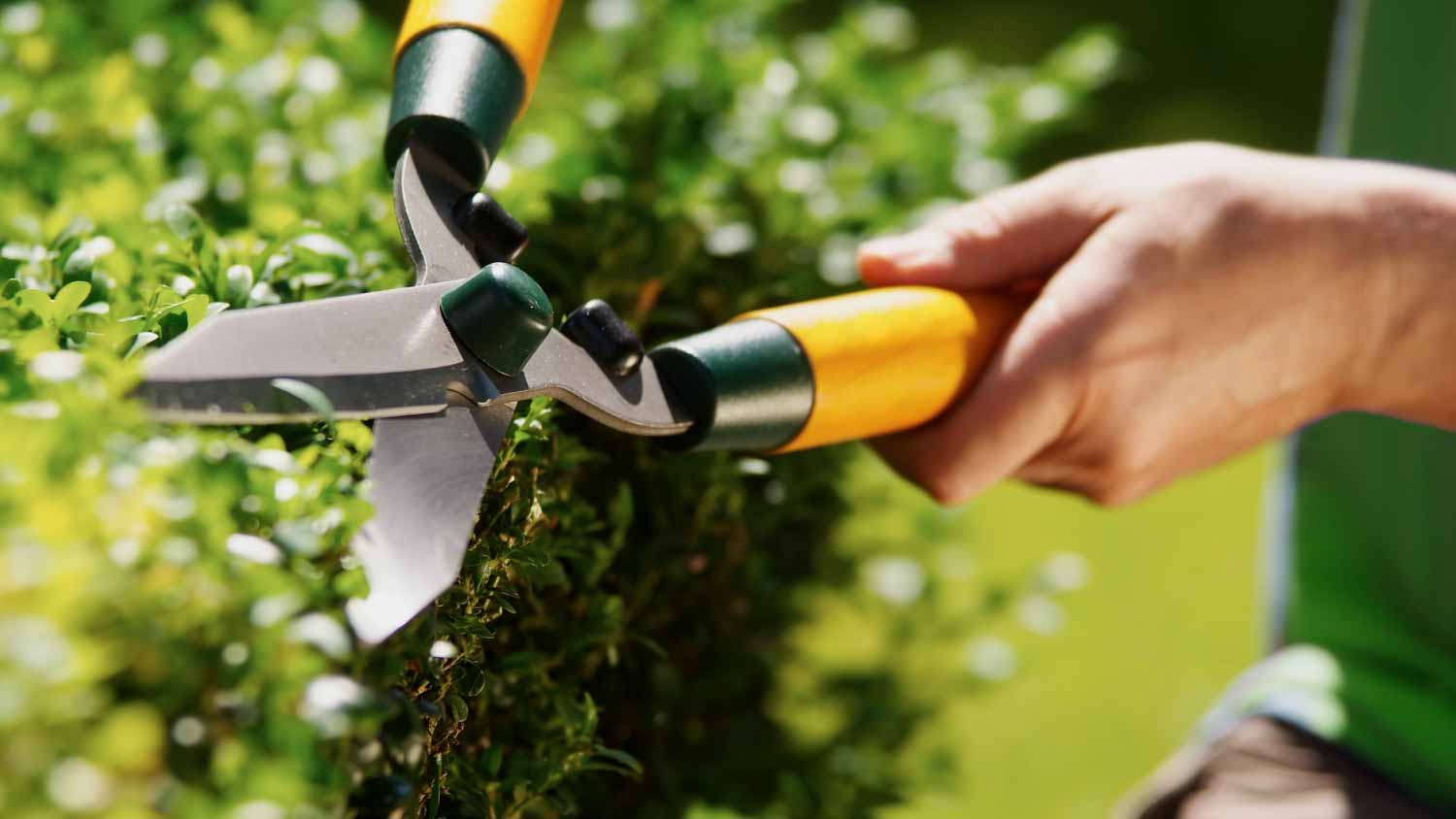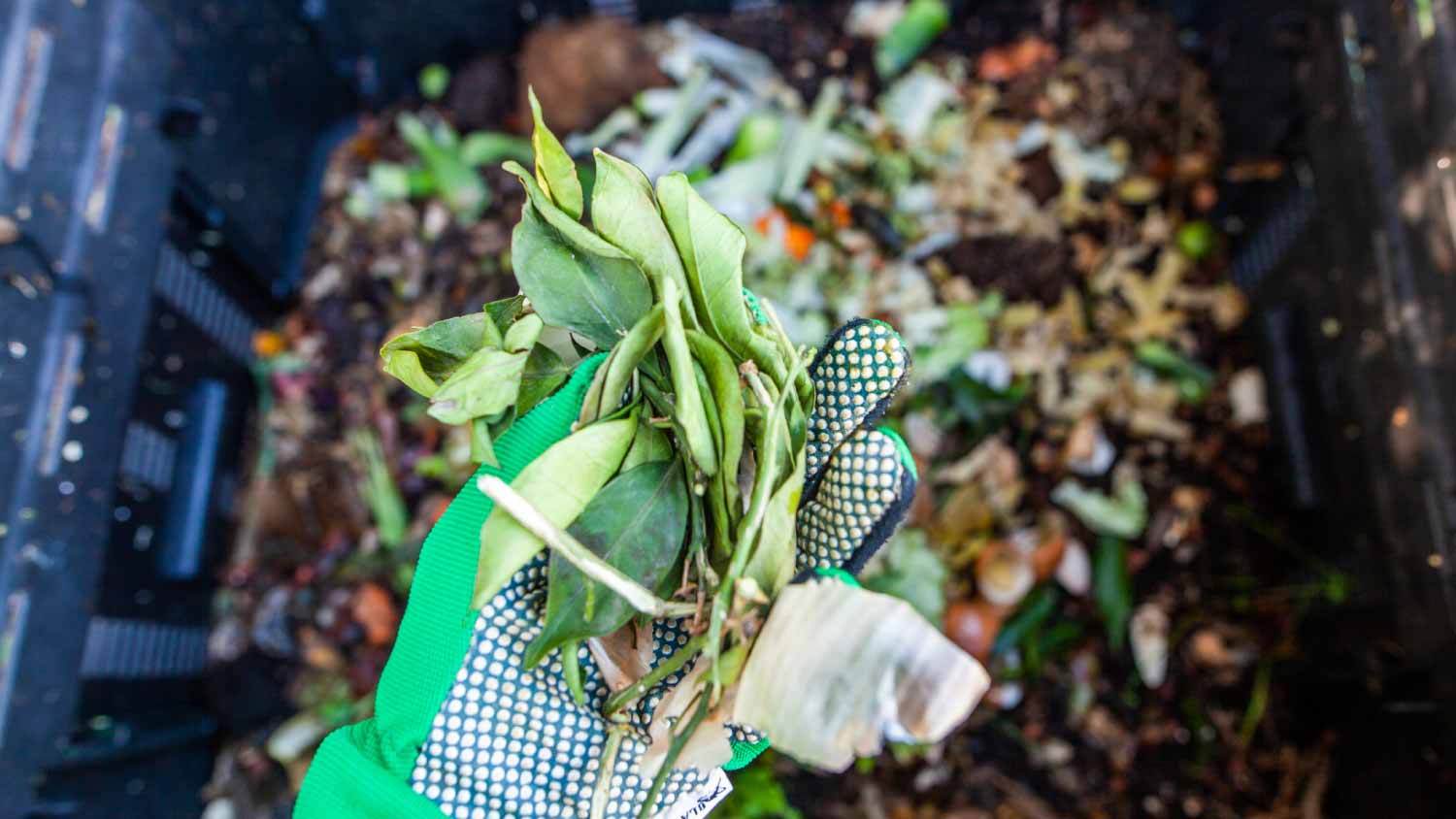The 7 Best Ways To Clean Up Hedge Trimmings
A good cleanup plan makes this landscaping task easier and less frustrating


Few feelings are as satisfying as trimming a hedge to make it neat and tidy, whether you’re using a powerful hedge trimmer tool or doing more delicate hand pruning. But when you’re done, you’re left with the task of removing and disposing of all the annoying trimmings. Here are the 7 best ways to clean up hedge trimmings.
Lay Down a Tarp or Drop Cloth
This is an especially good approach if you’ll be creating big piles of hedge trimmings of varying sizes. Place the tarp or drop cloth around the hedge before you begin, and let the trimmings fall onto it as you work. Any pieces that miss the tarp can be swept or shoveled onto it when you’re done working. Then simply close up the tarp and drag it to your vehicle or dumpster for disposal. If your plan is to dump the contents into trash bags or bins, use several tarps so that the piles are a more manageable size.
Keep in mind that a tarp or cloth can trap heat and moisture against the grass and damage your lawn if left to sit out for too long—or even for short periods of time if it’s a hot, sunny day.
Use Yard Debris Bins or Bags

Many residential areas offer homeowners yard debris bins (often green-colored) for organic materials; they can be wheeled out directly to the yard. Heavy-duty paper lawn and leaf bags, which have flat bottoms so they’re self-standing, are another good option. (Plastic lawn and leaf bags can work in a pinch, but even the strongest ones can get punctured by sharp branches.) Be prepared to cut down larger hedge trimmings to get everything to fit well.
If you’ll be using the trimmings for compost or mulch (see below) instead of disposing of them, a wheelbarrow makes more sense.
Vacuum Up Small Clippings
Not all hedge trimming jobs are large. Sometimes you’re only removing an inch or so of growth. In that case, vacuuming them up is a speedy solution. If you have a shop vac or outdoor-friendly vacuum, it should be able to handle these trimmings. In addition, many leaf blowers have a reverse setting that allows them to suck up small bits of debris into an attached bag or receptacle.
Add Trimmings to Your Compost

If you keep a compost heap or bin, you can add some of your hedge trimmings to it. Woody hedge trimmings, when clipped into small pieces, can help balance out moist, rich layers of compost to create a better end product. Just don’t overdo it—you probably won’t be able to add all your hedge trimmings.
Turn Them Into Mulch
You may be able to turn all those trimmings into mulch and reuse them on your property. Do a quick search to make sure the types of hedges you’re trimming are good candidates for mulch; some plants are toxic to pets, for example, so you wouldn’t want to scatter them around your yard if your dog spends time out there.
The fastest way to mulch your hedge trimmings is with a dedicated chipper or yard shredder, which you may be able to rent or borrow. Then use the mulch on pathways or as a protective layer around plants. If you’d like to avoid rental fees, you can also spread smaller trimmings on top of your lawn. The next time you mow, use the mulching setting to shred the trimmings.
Blow Out Your Hedge With a Leaf Blower
When you’re done trimming your hedge, there will probably be a lot of smaller clippings trapped in it. To remove them, blow out the hedge thoroughly with a leaf blower. You can then use the blower to pile up debris on your tarp or in another useful location for disposal.
If you don’t have a leaf blower, you can use a broom or a rake to dislodge lingering trimmings. Just do so carefully to avoid breaking any of the just-trimmed branches.
Hire a Pro
If the above steps are sounding like too much work, you can always hire professionals instead. A hedge trimming service near you can make your hedges look perfect and quickly take care of the resulting debris. Hedge pruning costs vary depending on the size of your property and the number of plantings you have but can cost as little as $200 for a smaller project.





- Landscapers
- Tree Surgeons
- Gardening Services
- Landscape Architects
- Sod Installation
- Tennis Court Contractors
- Landscape Design
- Retaining Wall Companies
- Grading Companies
- Landscape Rock & Sand Delivery
- Mulch Delivery Services
- Pond Companies
- Artificial Grass Companies
- Shrub Removal & Trimming
- Backyard Design Companies
- Commercial Landscaping
- Koi Pond Services
- Backyard Landscapers
- Trampoline Assembly
- Hedge Trimming
- Pond Services
- Garden Design
- Outdoor Plant Watering
- Putting Greens
- French Drains
- Turf Installation
- Sod Removal Services
- Lawn Repair Services
- Brush Chipping Services
- Hardscape Contractor
- Landscape Rock Removal
- How To Remove Hedges: 3 Effective Methods
- How to Get Leaves Out of Mulch in 4 Simple Steps
- How to Make Mulch for Your Yard
- Who to Hire for Mulch Projects
- What Mulch Is and How to Use It in Your Landscape
- How to Mulch Around Trees for a Healthy Yard
- 13 Essential Landscaping Tips for a Beautiful Spring Garden
- 11 Handy Tips and Tricks to Help With Your Next Home Project
- 12 Tips for Taking Care of Your Backyard, From Pruning to Weed Prevention
- 14 Home Improvement Projects You Can Do in a Day (or Less)










